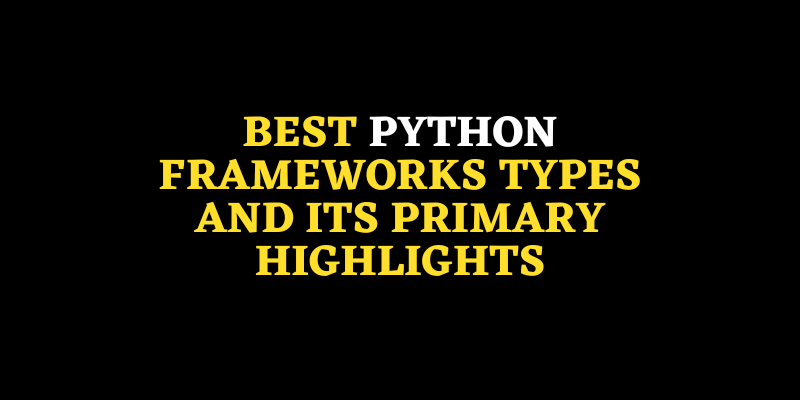Introduction
First, discuss the different kinds of Best Python frameworks before discussing the best ones. What tools do Python programmers need to make their jobs easier? The answer is to use frameworks. Frameworks speed up development by automating repetitive tasks, allowing programmers to spend much more time on the logic of applications rather than the routine parts.
Python has an excess of frameworks because it is one of the top programming languages. Different frameworks each have a unique set of benefits and drawbacks. As a result, the decision must be based on the project’s needs and the developer’s preferences.
Python frameworks can be divided into three categories: full-stack, micro-framework, and asynchronous.
The Python Training in Chennai at FITA Academy leads our learners from the introductory concepts of writing and completing scripts of Python.
Python Framework Types
1. Full-Stack Framework
These frameworks serve as a one-stop shop for a developer’s needs. A typical full-stack framework makes form generators, form validation, and template layouts frequently accessible.
2. Microframework
These simple frameworks don’t include other features and functionality like a database abstraction layer, form validation, or particular tools and libraries. Developers must manually add many codes and new needs when using a microframework.
3. Asynchronous Framework
Any asynchronous framework, which has recently gained popularity, is a microframework that enables the management of a sizable number of concurrent connections. An asynchronous framework created in Python typically makes use of the async package.
Python Online Course will enhance your technical programming skills and learn about what is interpreter in Python.
Best Python Frameworks
1. AIOHTTP
Asynchronous framework type AIOHTTP is a Python framework that strongly relies on async & awaits and other Python 3.5+ capabilities. The Python framework is asynchronous since it uses the asyncio package in Python. AIOHTTP can function as both a client and a server web framework. It offers a request object and router to make it possible to direct questions to programmes designed to deal with them.
Primary highlights:
- Allows for a realistic view of construction.
- Middleware assistance.
- Pluggable signal routing.
- Provides support for both client and server web sockets without callback hell.
2. Bottle
Microframework types Every application produced with Bottle generates a single source file. One of the best Python web frameworks is this one. Python’s microframework was first created to create APIs. The Bottle requires no dependencies other than the Python Standard Library to build simple web apps. One of the most important advantages of utilising a Bottle is enabling programmers to collaborate more closely with the hardware. The Bottle is a good choice for understanding how web frameworks are organised, prototyping, and creating simple personal-use apps.
Primary highlights:
- Support for WSGI/HTTP servers and third-party template engines through adapters.
- Easy access from cookies, data, file uploads, and other HTTP-related metadata is permitted.
- Integrated HTTP server.
- Support for several databases by plugins.
- Offers request-dispatching routes that handle URL parameters.
Conclusion
So far, we have enhanced Best Python Frameworks. Even though you have a variety of frameworks to select from, you must be aware of the characteristics and functionalities that each one has. You may assess how well your web development project is performing by selecting the appropriate framework. You can register if you’re interested in learning more about Python frameworks.
To learn more about Python programming, join Python Training in Coimbatore with worthy certification and career guidance.
Read More: Python Books for Beginners & Advanced Programmers and Top 10 Python Training in Chennai.

